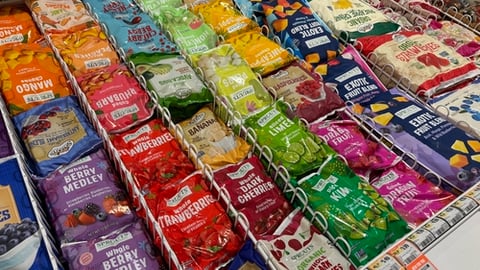An Opportunity For Grocers To Boost Sales of French Fries
French fries have long been a staple in the diets of Americans, whether the potato treats are made at home or purchased from their favorite fast food restaurant.
As consumers alter their consumption habits and seek out at-home meal solutions, there has been a shift in where consumers are eating French fries, according to data from AdAdapted. With a percentage of consumers cutting back on eating out, there is an opportunity for grocers to fill this void and provide restaurant-style fries that can be made at home.
Molly McFarland, founder and chief revenue officer with AdAdapted, noted her company when studying consumer behavior noticed a shift in where shoppers were getting their French fry fix.
“We were seeing (consumers) visiting Burger King, Wendy’s, and those types of places less, and at the same time items such as French fries are appearing more on their grocery lists,” she said. “This indicates that people are saying they’re not going to get dinner and their fries at McDonald’s. They’re going get a bag of frozen fries and make them at home.”
If consumers are indeed shifting their consumption habits, the full effect has yet to be seen in the frozen food aisles of grocers, mass merchants, and others that carry French fries.
Sales data provided to Store Brands by Circana show total sales of frozen fries for the 52 weeks ended October 6 of $2.14 billion, up 3.3% in dollars but down 0.4% in units. National brand fries accounted for $1.5 billion in sales, up 3.7% with unit sales up 1.8%. Sales of private label fries were $651.5 million, up 2.4%, but down 3.9% in units.
A notable exception in the world of grocery-based frozen fries is sales of products sold under the Arby’s brand. Figures provided by AdAdapted show sales of Arby’s French fries up 22% through the first six months of 2024.
The Arby’s brand is one example of a fast food restaurant working to offer its products to customers in the grocery store environment. Chick-fil-A, for example, sells its familiar dipping sauces to many grocers across the U.S.
While products such as fries sold under high profile restaurant brands are now in the frozen food cases of many grocery stores, the shift to home consumption does provide opportunities for retailers to boost their assortments with private label or branded products that either mimic those found in popular restaurants or develop unique flavor profiles.
“Grocers still want to reach that mom who is now not going to go to pick up Happy Meals for her kids, but will be going to the grocery store for the items they need to make dinner,” McFarland said. “It’s important to think about the shopper’s journey and what is motivating them, which will help grocers meet the need of their shoppers.”




